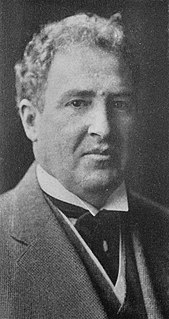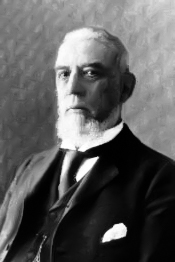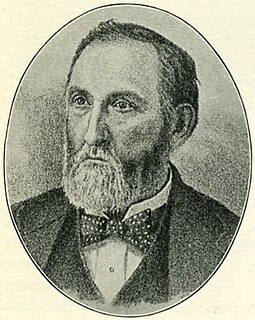
Jackson County is one of the 36 counties in the U.S. state of Oregon. As of the 2010 census, the population was 203,206. The county seat is Medford. The county is named for Andrew Jackson, the seventh president of the United States.

Beekman is a town in Dutchess County, New York, United States. It is part of the Poughkeepsie–Newburgh–Middletown, NY Metropolitan Statistical Area as well as the larger New York–Newark–Bridgeport, NY-NJ-CT-PA Combined Statistical Area. The population was 14,621 at the 2010 census. The town was named after Henry Beekman, a 17th-century land owner.

Union Vale is a town in Dutchess County, New York, United States. The population was 4,877 at the 2010 census.

Jacksonville is a city in Jackson County, Oregon, United States, approximately 5 miles (8 km) west of Medford. It was named for Jackson Creek, which flows through the community and was the site of one of the first placer gold claims in the area. It includes Jacksonville Historic District, which was designated a U.S. National Historic Landmark in 1966. As of the 2010 census, the city population was 2,785, up from 2,235 at the 2000 census.

Hillsboro is the fifth-largest city in the U.S. state of Oregon and is the county seat of Washington County. Lying in the Tualatin Valley on the west side of the Portland metropolitan area, the city hosts many high-technology companies, such as Intel, that compose what has become known as the Silicon Forest. At the 2010 Census, the city's population was 91,611.
The Beekman Native Plant Arboretum is a three-acre arboretum in Jackson County, Oregon, United States, that features trees, shrubs and herbs from eight zones of the Siskiyou and Cascade mountains in Southern Oregon. It is located behind the historic Beekman House at 352 East California Street in Jacksonville and is named for Jacksonville pioneer Cornelius C. Beekman.
Beekman is a Dutch toponymic surname, literally translating as "creek man". Variant forms are Beeckman and Beekmans. The Estonian poet Vladimir Beekman's family originally carried the name Peekmann. People with the surname include:

Jackson County Courthouse is an Art Deco building in Medford, Oregon, United States that was built in 1932, six years after county residents voted to move the county seat from Jacksonville to Medford.

The Jacksonville Historic District encompasses the historic core of the 19th-century mining town of Jacksonville, Oregon. The city was a major mining, civic, and commercial center from 1852 to 1884, and declined thereafter, leaving a little-altered assemblage of architecture from that period that is unparalleled in the Pacific Northwest. The district was designated a U.S. National Historic Landmark in 1966.

Beekman Meeting House and Friends' Cemetery is located on Emans Road in LaGrangeville, New York, United States. The meeting house is a wooden building from the early 19th century that has been unused and vacant for decades. As a result, it is in an advanced state of decay, and mostly collapsed. The cemetery, better preserved, is located a short distance away.

John Virginius Bennes was an American architect who designed numerous buildings throughout the state of Oregon, particularly in Baker City and Portland. In Baker City he did an extensive redesign of the Geiser Grand Hotel, designed several homes, and a now-demolished Elks building. He moved to Portland in 1907 and continued practicing there until 1942.

The Cornelius Hotel is a hotel building in downtown Portland, Oregon, United States that is listed on the National Register of Historic Places. It was designed by John V. Bennes's firm, and constructed in 1907–08. Its original period of use as a hotel had ended by the 1950s. A fire in 1985 left the top three floors uninhabitable. By the early 1990s the building had been vacated, and it then stood out of use for more than two decades. In 2016–2018, it was joined to the adjacent Woodlark Building, extensively renovated, and converted into a hotel. Named Woodlark House of Welcome, the hotel was scheduled to open on December 15, 2018.

Cornelius C. Beekman was a Wells-Fargo Express agent and banker in Jacksonville, Oregon, United States. He is the namesake of the Cornelius C. Beekman House and the Beekman Native Plant Arboretum.

The 1878 Oregon gubernatorial election took place on June 3, 1878 to elect the governor of the U.S. state of Oregon. The election matched Republican Cornelius C. Beekman against Democrat William Wallace Thayer, with Thayer defeating Beekman by a very small margin.

The Benjamin Cornelius Jr. House, also known as the Benjamin Cornelius Jr. and Rachel McKinney Cornelius House, is a historic residence located in Forest Grove, Oregon, United States. It was built around 1873 by carpenter Harley McDonald, one of the first settlers to offer architectural services in Oregon, and is one of only two houses designed by McDonald remaining in Forest Grove. Its Italianate form and Gothic details are highly distinctive in Forest Grove, while its veranda exhibits Colonial styling. Benjamin and Rachel Cornelius, the first occupants of the house, had crossed the Oregon Trail via the Meek Cutoff in 1845; the Cornelius family was instrumental in the foundation of Hillsboro and the town of Cornelius during their lifetime, and Benjamin was also prominently involved in early real estate transactions in the area. Benjamin was murdered in 1881, during the couple's tenure at this house.













